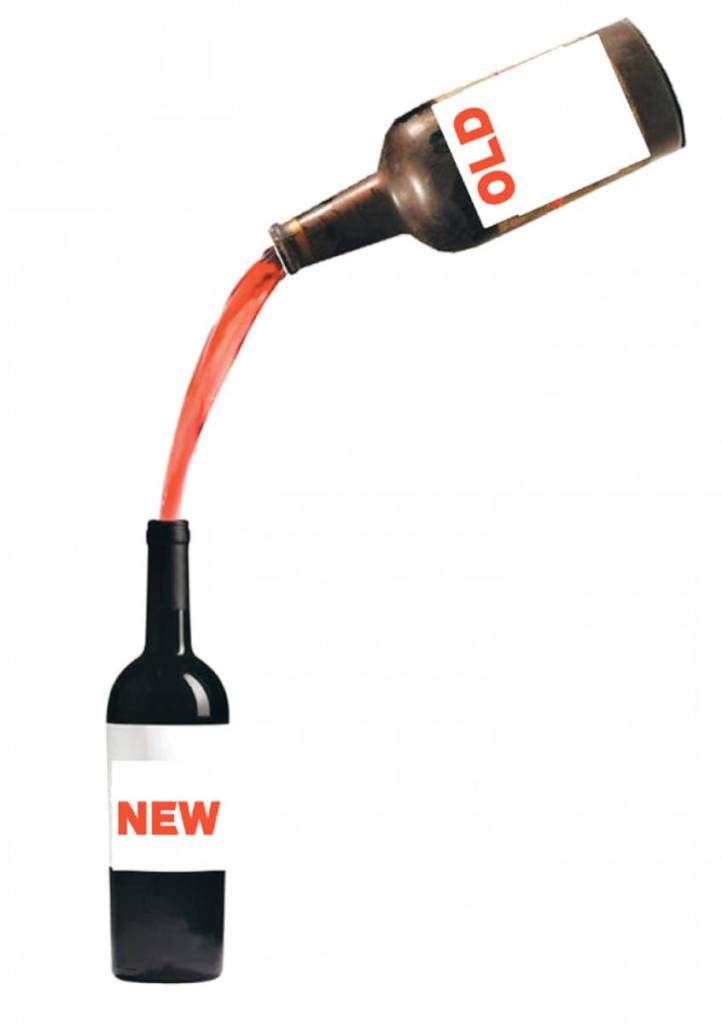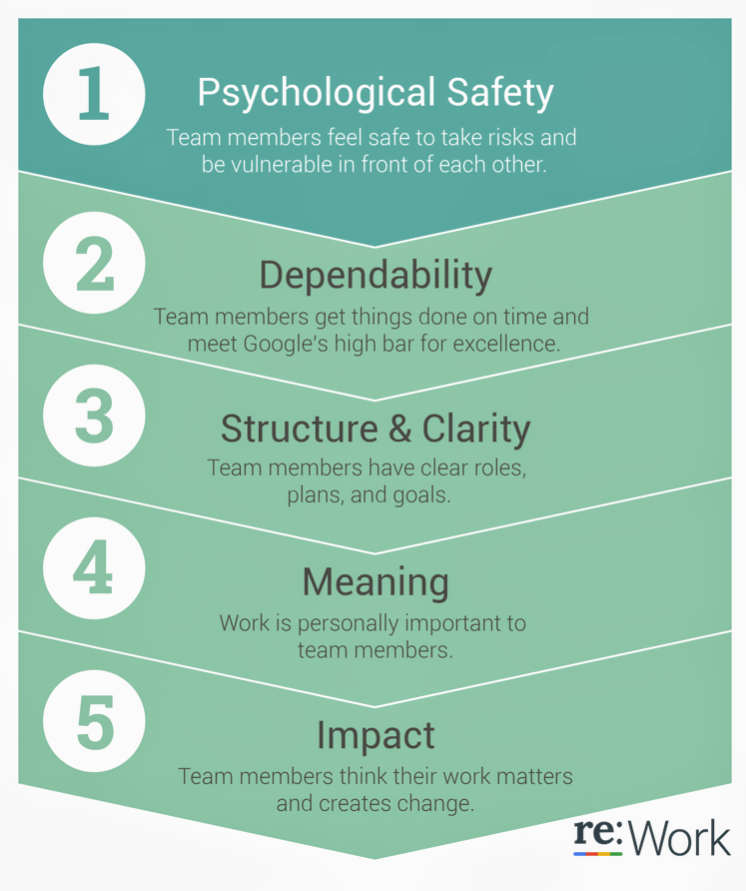
Teamwork and Group Dynamics
One of the most interesting things about teamwork and team development, human-adaptive-systems, is that most of the knowledge and research has been known for generations.
Even as we develop artificial intelligence, algorithms, and technological advances, understanding human nature and how we interact when we work together is something ancient civilizations had access to, with no need for computers or modern technology.
Five Keys to a Successful Team
In 2015 google wanted to understand what makes a successful google team. Here is what they found:
We learned that five key dynamics set successful teams apart from other teams at Google:
- Psychological safety: Can we take risks on this team without feeling insecure or embarrassed?
- Dependability: Can we count on each other to do high-quality work on time?
- Structure & clarity: Are goals, roles, and execution plans on our team clear?
- Meaning of work: Are we working on something personally important for each of us?
- Impact of work: Do we fundamentally believe that the work we’re doing matters?

What makes the team work well together?
While reading W.R Bion’s book “Experiences in Groups,” first published in 1961, I was pleased to see that Bion’s findings and those of many modern team building, team development, or teaming researchers still hold.
Bion shares the following qualities of a good team:
- A Common Purpose
- Common Recognition by members of the group of the group’s boundaries and their position and function concerning larger units or groups.
- The capacity to absorb new members and lose members without fear of losing group individuality – i.e., group character must be flexible.
- Freedom from internal subgroups having rigid boundaries. If a sub-group is present, it must not be centered on any of its members nor on itself – treating other members of the main group as if they did not belong within the main group barrier – and the value of the sub-group to the function of the main group must be generally recognized.
- Each individual member is valued for their contribution to the group and has free movement within it. This freedom of motion is limited only by the generally accepted conditions devised and imposed by the group.
- The group must have the capacity to face discontent within the group and have the means to cope with discontent.
- The minimum size of the group is three. Two members have personal relationships; with three or more, there is a change of quality (interpersonal relationship).
Team knowledge is known; how do we apply this to make teams work better?
We know what makes effective and creative teams. Plus, as mentioned above, the basics are researched and shared. For teams to work, multiple people within the team ought to know team dynamics and teaming.

